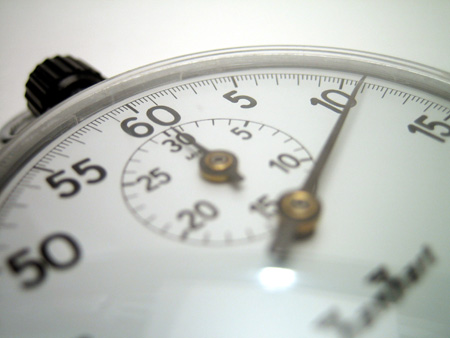Introduction
This activity combines science, fun and a little challenge! Your group will design and build "roller coasters" for marbles out of foam pipe insulation. Sound simple? Let’s see how we can challenge young and old alike!
All you need to carry out the activity is the short list of supplies below. A list of physical principles related to roller coaster science is included in the Preparation section. If you have a scientist available, it would be an extra benefit to have him/her speak about the physics behind the activity.
Supplies (see Preparation and Showtime! sections for details)
- Graph paper
- Pencils
- Plastic cups
- Stopwatch
- Marbles (if very young children are in attendance, do not let them have access to the marbles)
- Foam pipe insulation (polyethylene foam to fit 1-inch copper pipe will be pre-split on one side; you’ll want to split it fully so that it is in two halves lengthwise)
- Masking tape
- Items to help create the hills and turns (books, boxes, small pieces of furniture, etc.)
- Prize certificates (optional)
- "Twisty" snacks (optional)
Samples
Attached as a separate PDF, you will find the following samplematerials that you are welcome to use or reproduce:
- Roller Coaster Mania invitation.
- Roller Coaster Mania certificates of achievement.
Preparation
Select a venue that is appropriate to this activity. Send out invitations (see Samples). If desired, print out or redesign the sample certificate to give out to winners (see Samples).
For snacks, have licorice for participants to twist into roller coasters. Other "twisty" snack ideas would include rolls of dried fruit, pretzels, string cheese "twists," etc. Consider getting "silly straws" or bendable straws through which to enjoy the beverage of your choice.
Consider printing out and distributing the handout that begins below to your builders.

Science Terms & Principles (from www.thetech.org)
- Acceleration: The rate at which an object changes its velocity. An object is accelerating if it is changing its velocity, either speeding up or slowing down.
- Centripetal Force Requirement: An inward force acting upon an object that is moving in a circle in order to cause its inward acceleration.
- Elastic Potential Energy: Potential energy due to tension — either stretch (rubber bands, etc.) or compression (springs, etc.).
- Energy: "Nature’s way of keeping score." Measured in joules. Appears in many forms, most of which are ultimately derived from the sun or from radioactivity.
- Force: A push or pull. The force applied to a machine is called work input or effort force.
- Gravitational Potential Energy: Potential energy due to elevated position. Gravitation potential energy = weight × height. Note this only depends on vertical displacement and not the path taken to get it there. This value is always relative to some reference level.
- Inertia: The tendency of matter to remain at rest if at rest, or, if moving, to keep moving in the same direction, unless affected by an outside (or unbalanced) force.
- Kinetic Energy (KE): Energy of motion. KE = ½ mass × velocity ² = ½ mv ². Note that small changes in speed can result in large changes of KE (it’s speed squared!). Net force × distance = KE. Includes heat, sound and light (motion of molecules). KE is a scalar quantity; it cannot be canceled.
- Mass: The amount of matter that is contained by an object.
- Mechanical Energy: Energy possessed by an object due to its motion or its stored energy of position. Mechanical energy can be either kinetic energy (energy of motion) or potential energy (stored energy of position).
- Momentum: The quantity of motion of a moving object, equal to the product of its mass and its velocity.
- Potential Energy (PE): Energy of position; energy that is stored and held in readiness. Includes chemical energy, such as fossil fuels, electric batteries and the food we eat.
- Velocity (speed): How fast an object is moving. The distance traveled over time.
- Newton’s Law of Conservation of Energy: Energy cannot be created or destroyed; it may be transformed from one form into another, or transferred from one place to another, but the total amount of energy never changes.
- Newton’s Laws of Motion
- 1st Law (Law of Inertia): An object at rest tends to stay at rest, and an object in motion tends to stay in motion with the same speed and in the same direction unless acted upon by an unbalanced force.
- 2nd Law:When an unbalanced force acts on a body, it is accelerated in the direction of the force; the magnitude of the acceleration is directly proportional to the force and inversely proportional to the mass of the body.
Showtime!
At the Event
Have your building supplies and snacks ready. Divide into groups (unless you have fewer than four people attending). Conquer the following challenges:
Ramp
The first activity will be to design a ramp that will allow the marble to jump off the ramp and into a cup. Goal? Go the farthest, of course. The marble must start on its own – no helpful fingers pushing it! Give each group two lengths of insulation for this activity, but don’t count the insulation in the distance. Distance is measured from the end of the ramp to the cup.
Loop
Next, the groups will design a roller coaster with at least one complete vertical loop. The marble has to stay on the track the whole time it’s running the course. As with the ramp, the marble needs to start under its own force.
Triple Crown
Finally, have the groups design a roller coaster that has a hill, a loop and a turn. As with the other projects, the marble needs to start under its own force and stay on the track. To increase the challenge, time the trips and have a race!
